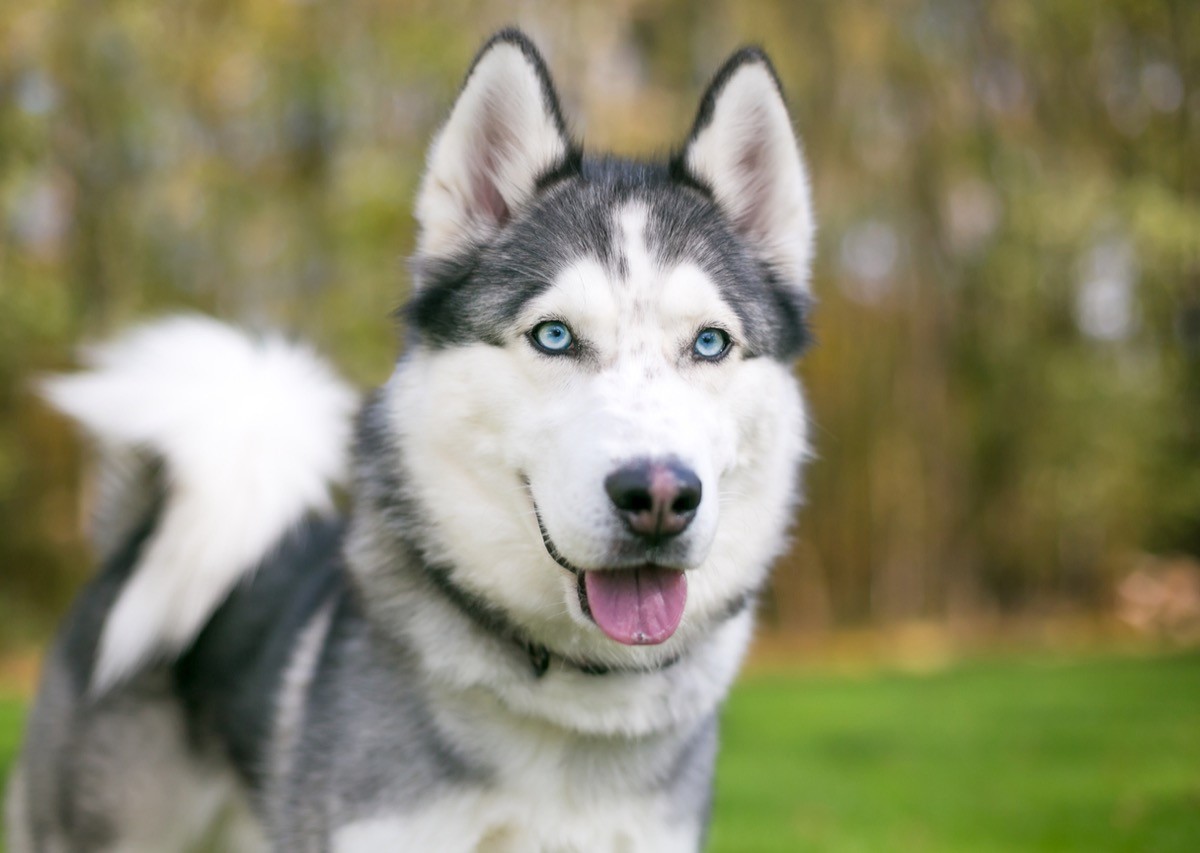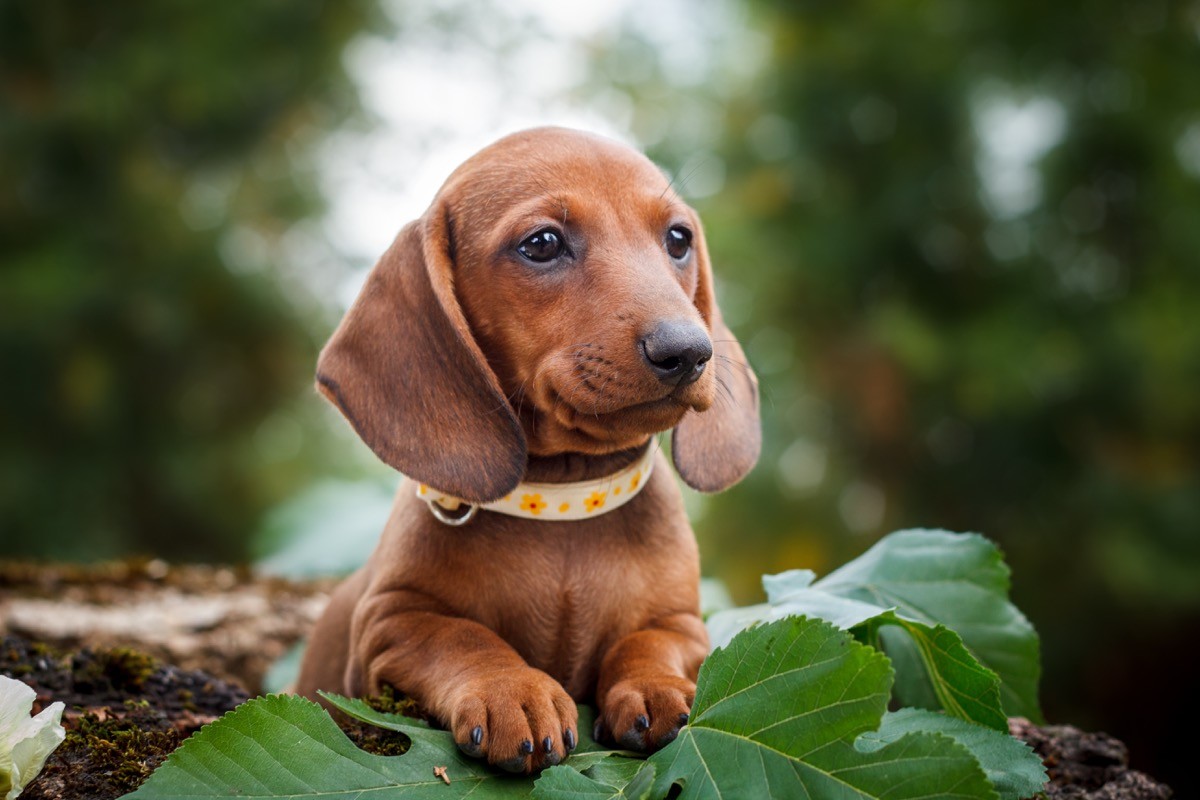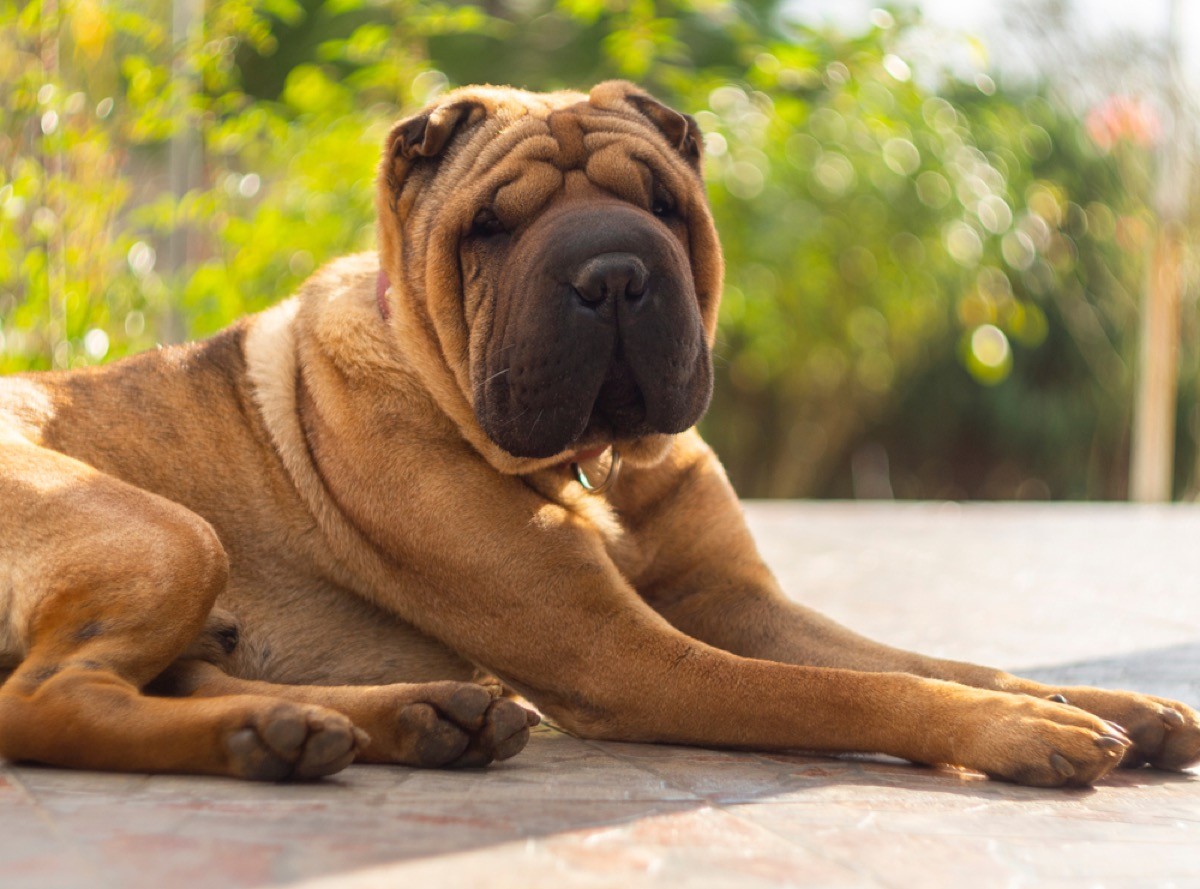Dog Trainer Reveals 3 Breeds He Doesn’t Like Working With

If you’re going to take pet advice from anyone, let it be a professional dog trainer. They can be a great point person during the research process, whether you’re a first-time dog owner or considering adopting a different canine breed. After all, who’s more well-versed with a breed’s temperament, listening skills, and quirks—both good and bad!—than a dog trainer? In a recent TikTok clip, dog trainer Will Atherton, shared his least favorite dog breeds to work with and why.
RELATED: I’m a Veterinarian and These Are the Top 5 Neediest Dog Breeds.
Siberian Husky

If you live on or near a large plot of land, a Siberian Husky would make for a great companion. However, if you don’t have a big backyard or can’t relate to being a social butterfly who’s always booked and busy, then a husky might not be the best dog for you.
“Very, very rarely [do huskies] make good family pets, and I often find that they’re more cat than they are dog,” said Atherton.
The weather where you live matters, too. “Huskies belong in arctic conditions, running absolute miles and hours every single day,” added Atherton.
According to the American Kennel Club (AKC), huskies are known to be very high-energy, good with other dogs, and super affectionate. That said, they shed a lot, have an earth-shattering bark, and require constant mental stimulation.
RELATED: Cesar Millan Reveals How to Actually Stop Your Dog From Barking.
Dachshund

“I believe, due to their absolute explosion in popularity, the breed standards have started to slip, especially when it comes to temperament and characteristics,” shared Atherton of the Dachshund.
The AKC describes these dogs as “curious, friendly, and spunky.” However, they’re needy regarding playtime and can be over-vigilant. Plus, they’ve got a loud bark on them. While these characteristics aren’t necessarily deal breakers, Atherton said they do tend to fly under the radar for potential dog owners.
“Unfortunately, I think a lot of people are getting them for the wrong reasons, and they’re choosing them because of how they look,” he said. “They’re not necessarily putting the work in that’s required to get that kind of tenacious, hunting breed to the levels that it needs to be to be a calm, relaxed canine companion.”
RELATED: I’m a Dog Trainer and I’d Never Own These 5 Breeds “Unless My Life Depended on It.”
Chinese Shar-Pei

This breed is famous for its wrinkled coat, which comes with many potential medical issues. Mar Vista Animal Medical Center explains that Chinese Shar-Peis are prone to ear infections, eye issues, skin infections, and thyroid problems. They’re also susceptible to a genetic disease called Shar Pei Fever, which can trigger serious fevers and uncomfortable swelling in the joints.
Chinese Shar-Peis can also be extremely possessive and are known to have an aggressive side. For these reasons, they don’t make great first-time pets, according to Atherton.